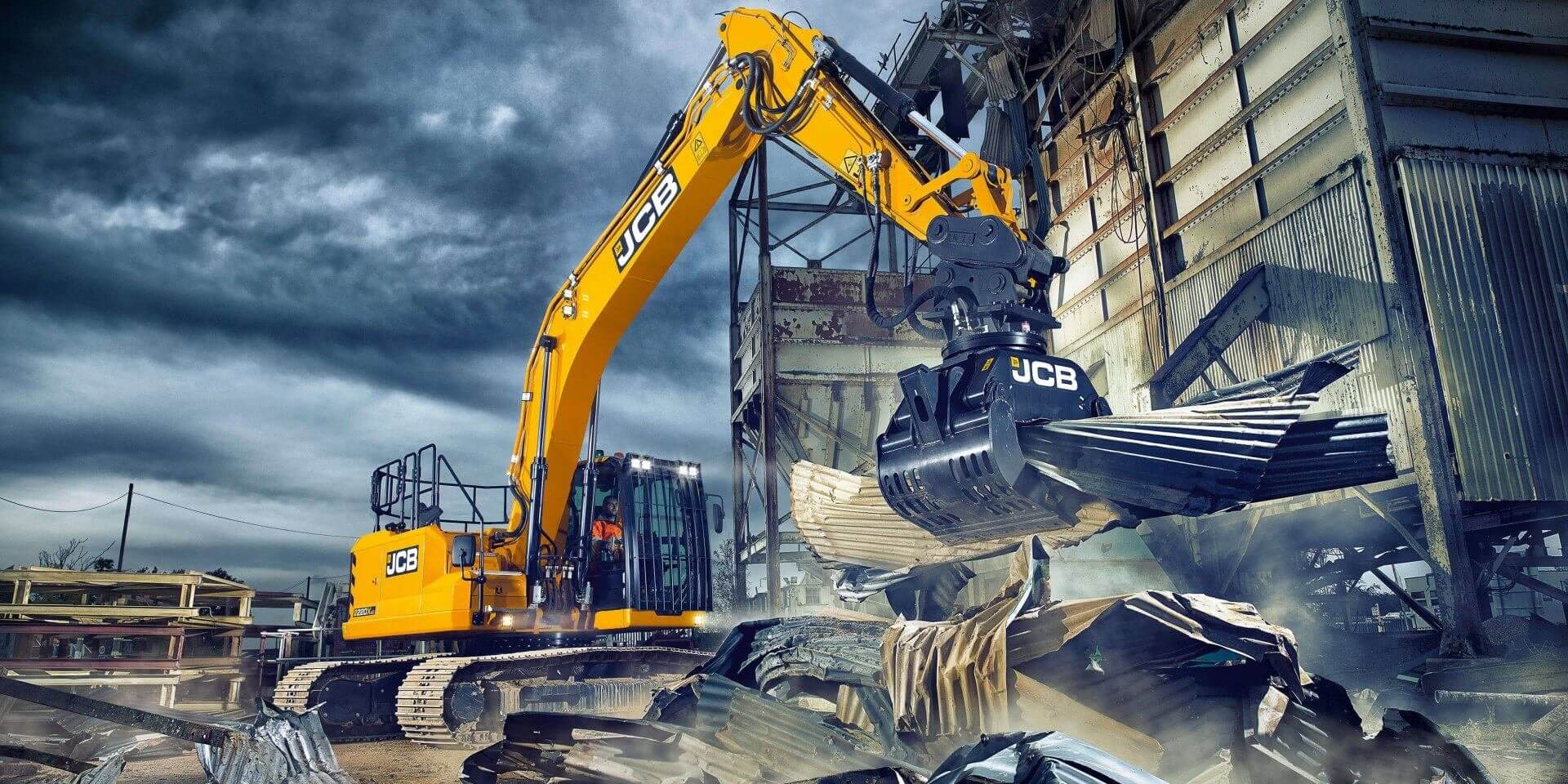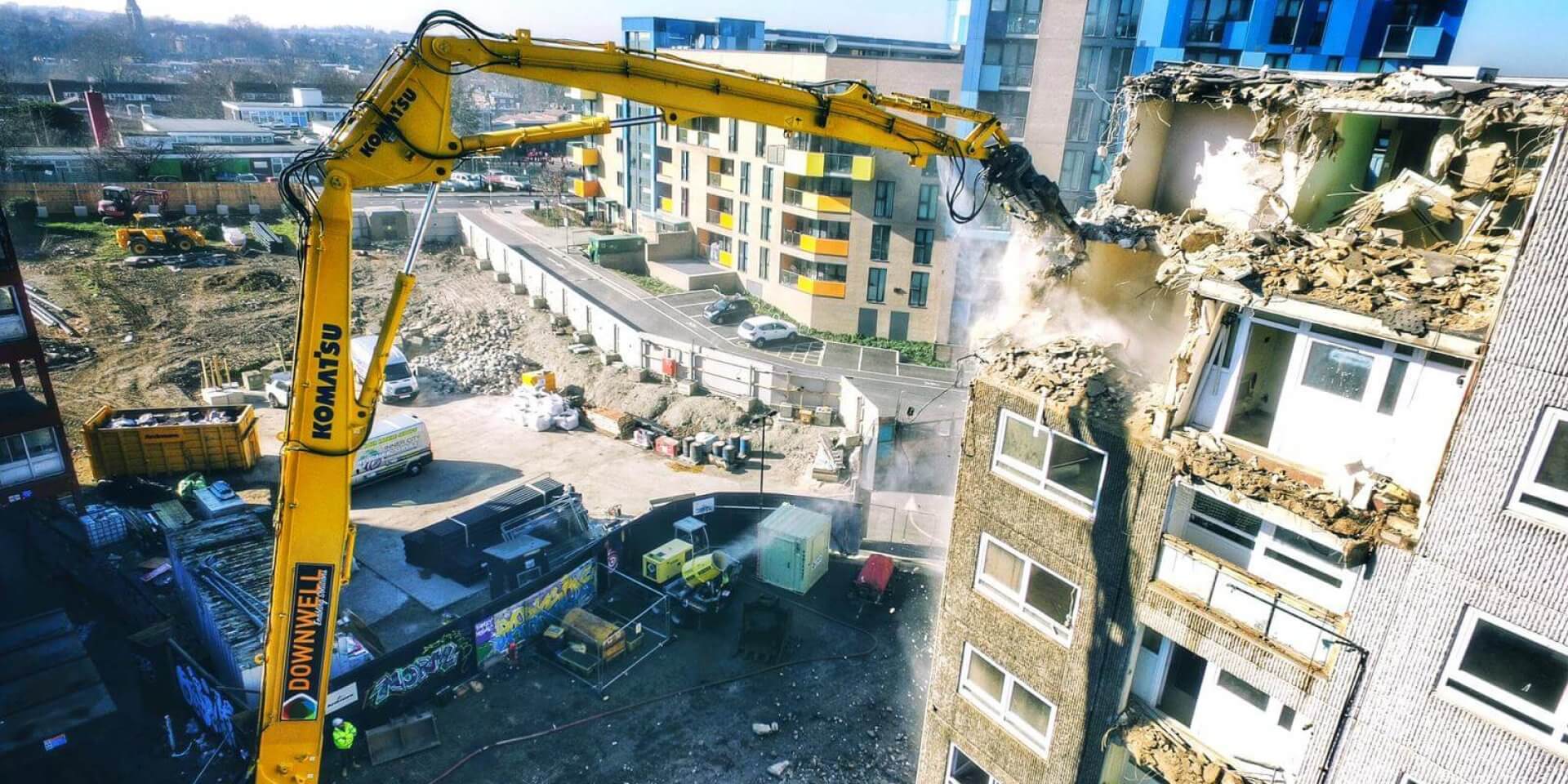One of the judges at the 2009 Demolition Awards will be John Woodward, newly-elected vice-president of the Institute of Demolition Engineers. In this exclusive interview, Demolition News speaks to Woodward about his part in these exciting awards:
Exclusive podcast – Interview with John Woodward…
Exclusive podcast – Interview with Lindsay Gale…
The international trade magazine Demolition & Recycling International (D&Ri) recently announced plans to host the first-ever award ceremony to recognise the work of demolition professionals the world over.
In this exclusive podcast, D&Ri editor Lindsay Gale – the driving force behind the awards – highlights his hopes and aims for the Demolition Awards:
Ebbw Vale flats tumble…
Nice video showing Welsh contractor Cuddy Demolition & Dismantling despatching derelict flats at Briery Hill, Ebbw Vale.
ConJet assists Italian viaduct repairs
 The multi-span reinforced concrete viaduct at Torano, about 100 km east of the Italian capital Rome, is a major structure on the main E80/A24/A25 Autostrada crossing central Italy. The Viadotto Fiume Salto was opened in the late 1960s, but the use of de-icing salts during winter months has since caused considerable calcium chloride damage to the structure forcing the Italian Highways Authority and the Autostrada di Parchi’s owner Toto S.p.a. to carryout extensive repairs. The renovation, funded by revenue from tolls, is expected to cost around €5M and is focusing on the piers and main joints in the concrete deck using the high pressure water jetting technique of hydrodemolition to remove the calcium chloride infected concrete.
The multi-span reinforced concrete viaduct at Torano, about 100 km east of the Italian capital Rome, is a major structure on the main E80/A24/A25 Autostrada crossing central Italy. The Viadotto Fiume Salto was opened in the late 1960s, but the use of de-icing salts during winter months has since caused considerable calcium chloride damage to the structure forcing the Italian Highways Authority and the Autostrada di Parchi’s owner Toto S.p.a. to carryout extensive repairs. The renovation, funded by revenue from tolls, is expected to cost around €5M and is focusing on the piers and main joints in the concrete deck using the high pressure water jetting technique of hydrodemolition to remove the calcium chloride infected concrete.
Specialist hydrodemolition contractor C.P.L. 2000 S.r.l., in joint venture with Edil C.R.R. and Global Klima S.r.l. and working for Toto, is using a Conjet 322 Robot hydrodemolition machine and Conjet Powerpack bought specifically for the repair from Conjet’s sole Italian dealer Roald di Codecasa & C.s.n.c based in Milan. “This is a major bridge repair project and hydrodemolition with the Conjet Robot is the only method of removing the damaged concrete,” says C.P.L. 2000 S.r.l president Angelino Rinaldi. “Using very high pressure jets of water to remove only the poor concrete does not cause any damaged to the good concrete left behind and if necessary it also takes away concrete from below the reinforcement, which is also cleaned of any rust. Using breakers would have taken so much longer and also caused damage to the good concrete left behind. Hydrodemolition with the Conjet Robot also has the advantage of producing a very rough surface, which gives a good bond for the new concrete to key onto.”
The viaduct carries the busy dual two lane E80/A24 Autostrada across a narrow valley skirting to the south of Torano and just before the E80/A24 forks northeast towards L’Aquila and southeast onto the A25 to Pescara. The bridge deck is supported on 12 pairs of reinforced concrete hollow piers up to 40 m high and spaced at intervals of about 42 m across the valley. The individual piers are spaced at about 11 m centres and each one is topped with its own transverse crosshead, which in turn supports longitudinal precast concrete beams for each carriageway deck.
The main focus of the hydrodemolition repair is on the octagonal shaped piers and their crossheads where the de-icing salt has leaked down from the deck above. The calcium chloride attack on the concrete is inconsistent with a patchwork of damaged areas over the surface of the 24 piers totalling about 380 m2. In many instances the de-icing salt has seeped deep into the concrete and the resulting corrosion of the reinforcement has pushed the concrete off and exposed the reinforcing to further corrosion from the elements. C.P.L. 2000 S.r.l concentrates on one pair of piers at a time and successfully uses a special purpose built rack and pinion climbing platform designed and built by Safi, which gives the Conjet 322 Robot unrestricted working access to all faces on each set of piers. The Conjet 322 Robot is connected to a Conjet Powerpack delivering clean fresh water at a pressure of about 1,300 bar and flow of 200 litres/min and is removing concrete generally to a depth of 30mm to 130mm. In some instances maximum removal depth has been as high as 180 mm, but the average on the project has been between 70 mm to 80 mm. “We bought the Conjet 322 Robot specifically for this project and has been operated by Yamadu Konate and Vittorio Triuzzo. The 322 has been a very good machine and I can’t see how we could have done the job without it,” says Angelino Rinaldi.
After C.P.L. 2000 S.r.l has finished concrete removal from one set of piers the company moves onto the next pair using a separate, but identical Safi working platform. Another contractor in the joint venture then follows on using the first platform to spray steel fibre reinforced concrete on the patches, which are levelled and float finished by hand. The entire sequence is repeated on all 12 pairs of piers. C.P.L. 2000 S.r.l is also using hydrodemolition with hand lances to remove the damaged concrete from the main joints on the bridge deck and also directly underneath the longitudinal beams supporting the deck.
Conjet was involved at the early stage of the project and assisted CPL 2000 S.r.l. in selecting the right type of platform they would need on the tall piers. Conjet considered the space the robot would require to work in an unrestricted manner and maintain high production during the concrete removal process. CPL 2000 S.r.l. is using three platforms and after concrete removal with the Conjet Robot they are also used for the placement of fresh concrete.
To complete the concrete restoration the repaired structure will be finished off with a final coating of protective paint to prevent possible future attack from de-icing salt. The repairs started in June 2007 with the hydrodemolition following on three months later in September. The project shut down during the winter months from December to March and restarted in spring of 2008 and finished on schedule at the end of November.
Implosion toy for the budding demolition expert in your family…
For almost as long as we have had excavators and cranes, we have had models and miniaturised versions for kids to play with and it would be nice to think that one or two children have been inspired by these toys to seek a career in demolition. Let us certainly hope that the children “fortunate” enough to receive one of these toys for Xmas will put their new-found skills to a similarly positive use.
Demolition for vandalised Glasgow buildings…
A demolition scheme has been approved for council-owned buildings in Glasgow which have been targeted by vandals.
The £1m project aims to make sites more attractive to developers by removing potentially high clearance costs.
Full story here.
Devlin appoints new demolition manager…
 David Hodgkins has been appointed Manager of Clifford Devlin’s Demolition Division. David joins the East London contractor from John F Hunt where he spent six years as a Project Manager. He replaces Neil Pedlingham who has left the company after nine years to live abroad.
David Hodgkins has been appointed Manager of Clifford Devlin’s Demolition Division. David joins the East London contractor from John F Hunt where he spent six years as a Project Manager. He replaces Neil Pedlingham who has left the company after nine years to live abroad.
David has nearly twenty year’s experience in the construction industry having fulfilled several roles from land surveyor at Tarmac to Senior Engineer (Shepherd Hill), Communications Engineer (Fitzpatrick) and Senior Construction Manager (Laing Construction).
“David’s experience and range of skills make him the ideal candidate to Head our burgeoning Demolition Division,” says Managing Director, Tim Clifford, “He is clearly familiar with the unique set of disciplines and challenges involved in urban demolition.”
David has hands-on knowledge of all the elements of complex inner-city demolition projects including asbestos removal, structural concreting, façade retention, earth works, piling, concrete works, steel frame erection and drainage.
Grain elevator implosion…
The following video shows the explosive demolition of a grain elevator at the port of Baltimore in the US. Just wish they’d had the foresight to turn off the vehicle’s windshield wipers while filming:
New York demolition code requires redraft…
UK-based magazine New Civil Engineer reports that New York needs to redraft its demolition codes because regulations are being overlooked when buildings undergo structural refurbishment, leading engineers claimed last week.
New York City Buildings Department deputy assistant commissioner Dan Eschenasy said investigations into collapses in New York had revealed confusion about when demolition guidelines should apply.
Full story here.
Powerscreen lay offs…
The BBC in the UK is reporting that Terex-group company Powerscreen has introduced a range of temporary lay offs for most of its staff.
Full story here.





